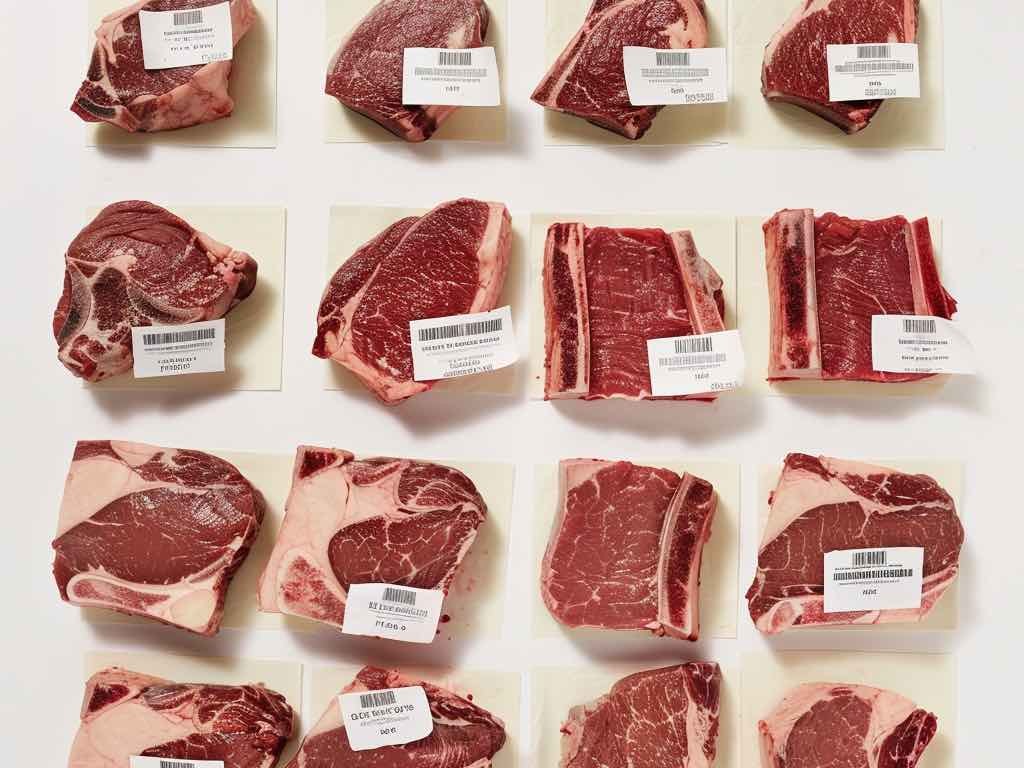
Understanding Choice vs. Prime Beef: A Comprehensive Guide
|
|
Time to read 5 min
Welcome to One Stop Halal!
Written by: Samir P.
|
|
Time to read 5 min
When it comes to enjoying a delectable steak or a juicy roast, the quality of the beef matters significantly. Among the various grades of meat available, "Choice" and "Prime" are two of the most commonly encountered grades in grocery stores, butcher shops, and high-end restaurants. Understanding the differences between these two grades can enhance your culinary experiences and help you make informed choices when purchasing beef. This comprehensive guide delves into Choice vs Prime beef, exploring its characteristics, culinary applications, and how to select the best cuts for your needs.
Before diving into the specifics of prime or choice beef, it's essential to understand the beef grading system. The United States Department of Agriculture (USDA) is responsible for grading beef based on two main criteria: quality and yield.
Prime beef represents the highest quality available and is often reserved for high-end dining establishments and discerning consumers. Here are the critical characteristics of Prime beef:
Choice beef is the second-highest quality grade and is more widely available than Prime. It offers an excellent balance of quality and affordability. Here are the main features of Choice beef:
The choice between Prime and Choice beef often depends on the cooking method and the occasion. Here are some guidelines to help you decide which grade to use for different culinary applications:
Prime beef is the best choice for high-heat cooking methods like grilling and broiling. The abundant marbling ensures the meat remains juicy and flavorful even at high temperatures. Cuts like Prime ribeye, New York strip, and filet mignon are perfect for grilling and broiling, delivering an unparalleled dining experience. Choice beef is also suitable for grilling and broiling, mainly if you prefer a slightly leaner cut. Choice ribeye, strip steak, and sirloin can yield excellent results, especially when marinated or seasoned with care.
When roasting, both Prime and Choice beef can produce outstanding results. Prime rib roast is a classic centerpiece for holiday dinners and special occasions, offering a rich, succulent flavor. Choice beef, such as a Choice rib roast or tenderloin, can be perfectly roasted, providing a delicious and satisfying meal for a larger crowd.
Choice beef is often preferred for braising and slow-cooking methods due to its affordability and availability. Cuts like Choice chuck roast, brisket, and short ribs benefit from the slow cooking process, becoming tender and flavorful over time. Prime cuts can also be used for these methods, but the differences in quality may be less noticeable due to the extended cooking time.
For everyday meals, Choice beef offers a practical and delicious option. It provides a good balance of quality and cost, making it ideal for weeknight dinners and casual gatherings. Ground beef, stew meat, and various steak cuts from Choice Beef can be used in multiple recipes, ensuring versatility in your cooking repertoire.
Selecting the best beef involves understanding critical quality indicators and making informed choices based on your cooking needs. Here are some essential tips to ensure you pick the perfect cut every time:
Marbling refers to the white streaks of fat interspersed within the muscle. It is a crucial indicator of flavor and tenderness. More marbling typically means juicier, more flavorful beef. Opt for cuts with abundant marbling, such as ribeye or New York strip, for grilling or broiling.
Fresh beef should be bright, cherry-red. This indicates that the meat is fresh and properly handled. Avoid cuts that appear brown or gray, as these can be signs of aging or spoilage.
Different cuts are suited to other cooking methods. Choose tender cuts like ribeye, strip steak, or filet mignon for grilling and broiling. Opt for stricter cuts like chuck, brisket, or short ribs for slow cooking or braising, which become tender over long cooking periods.
Quality beef should have a firm texture. Press the meat gently with your finger; it should spring back slightly. Avoid beef that feels mushy or has an overly soft texture, indicating poor quality.
Fresh beef should have a mild, clean smell. Any off or strong odor indicates that the beef may be spoiled. Trust your senses—it’s best to avoid it if it smells off.
Purchase your beef from trusted butchers, grocery stores, or online retailers known for their quality and freshness. Establishing a relationship with a knowledgeable butcher can provide valuable advice and access to the best cuts.
Understand the USDA grading system: Prime, Choice, and Select. Prime offers the highest marbling and tenderness, which is ideal for special occasions. Choice provides a balance of quality and affordability, suitable for everyday cooking. Select has the least marbling and is typically leaner.
With these tips, you can confidently select the best beef for any culinary endeavor, ensuring delicious and satisfying results.
Welcome to the Home of the Halal Beef. We carry various beef cuts that are hard to find elsewhere. We deliver to your doorstep anywhere in the United States within 1-2 business days.
Understanding Choice beef vs Prime beef can elevate your culinary experiences and help you make informed decisions when purchasing meat. Prime beef is perfect for special occasions and high-heat cooking methods with its superior marbling, tenderness, and flavor. Choice beef, offering an outstanding balance of quality and affordability, is versatile and suitable for various dishes.
By selecting the correct grade and cut of beef for your cooking method, you can create delicious meals that impress your family and friends. Whether you're grilling a Prime ribeye for a backyard barbecue or slow-cooking a Choice chuck roast for a cozy family dinner, knowing the characteristics of Choice and Prime beef ensures that every meal is memorable.

© 2026 One Stop Halal, Inc.